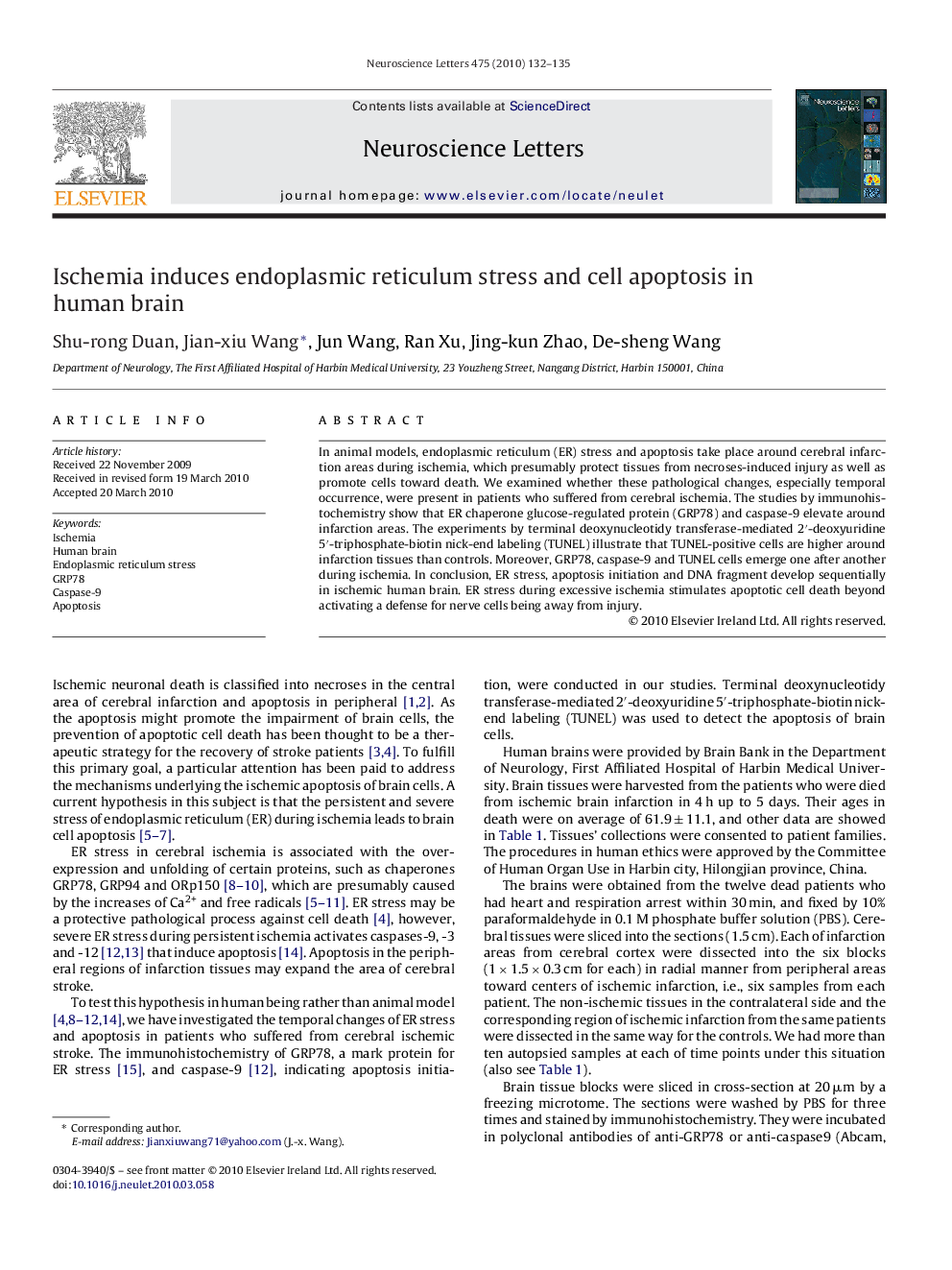| Article ID | Journal | Published Year | Pages | File Type |
|---|---|---|---|---|
| 4346068 | Neuroscience Letters | 2010 | 4 Pages |
In animal models, endoplasmic reticulum (ER) stress and apoptosis take place around cerebral infarction areas during ischemia, which presumably protect tissues from necroses-induced injury as well as promote cells toward death. We examined whether these pathological changes, especially temporal occurrence, were present in patients who suffered from cerebral ischemia. The studies by immunohistochemistry show that ER chaperone glucose-regulated protein (GRP78) and caspase-9 elevate around infarction areas. The experiments by terminal deoxynucleotidy transferase-mediated 2′-deoxyuridine 5′-triphosphate-biotin nick-end labeling (TUNEL) illustrate that TUNEL-positive cells are higher around infarction tissues than controls. Moreover, GRP78, caspase-9 and TUNEL cells emerge one after another during ischemia. In conclusion, ER stress, apoptosis initiation and DNA fragment develop sequentially in ischemic human brain. ER stress during excessive ischemia stimulates apoptotic cell death beyond activating a defense for nerve cells being away from injury.
